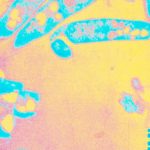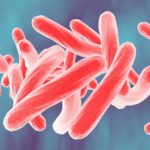Lien vers Pubmed [PMID] – 33607704
Lien DOI – 10.1111/imr.12956
Immunol Rev 2021 Feb; ():
Mycobacterium ulcerans causes Buruli ulcer, a neglected tropical skin disease manifesting as chronic wounds that can leave victims with major, life-long deformity and disability. Differently from other mycobacterial pathogens, M ulcerans produces mycolactone, a diffusible lipid factor with unique cytotoxic and immunomodulatory properties. Both traits result from mycolactone targeting Sec61, the entry point of the secretory pathway in eukaryotic cells. By inhibiting Sec61, mycolactone prevents the host cell’s production of secreted proteins, and most of its transmembrane proteins. This molecular blockade dramatically alters the functions of immune cells, thereby the generation of protective immunity. Moreover, sustained inhibition of Sec61 triggers proteotoxic stress responses leading to apoptotic cell death, which can stimulate vigorous immune responses. The dynamics of bacterial production of mycolactone and elimination by infected hosts thus critically determine the balance between its immunostimulatory and immunosuppressive effects. Following an introduction summarizing the essential information on Buruli ulcer disease, this review focuses on the current state of knowledge regarding mycolactone’s regulation and biodistribution. We then detail the consequences of mycolactone-mediated Sec61 blockade on initiation and maintenance of innate and adaptive immune responses. Finally, we discuss the key questions to address in order to improve immunity to M ulcerans, and how increased knowledge of mycolactone biology may pave the way to innovative therapeutics.


